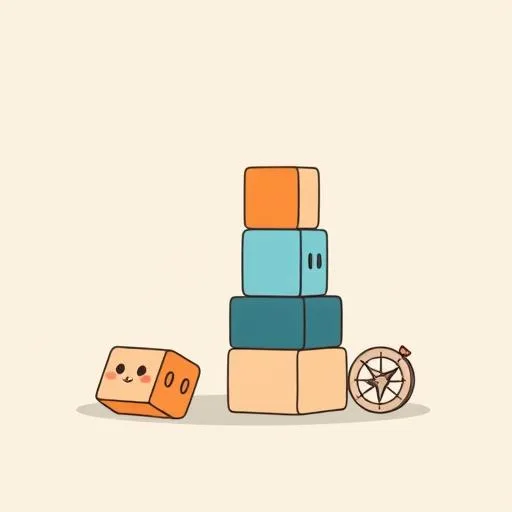
Watched a child lately? I did this morning. Five-year-old legs chasing pigeons in the park, then stopping dead to ask: ‘Why do birds fly but clouds stay?’ That raw curiosity—not any app—is the real superpower we’re here to protect. Now, with news buzzing about Mistral AI’s rocket ride from French startup to $13.8 billion valuation (backed by that record ASML investment), it’s time to pause. How do shiny new tools fit into keeping kids’ eyes wide open—not glued down?
Turns out, the most exciting part isn’t the tech itself. It’s how we let it fan flames of imagination without replacing the messy, joyful work of being a kid. Let’s untangle that together.
What’s This ‘Mistral AI’ Buzz All About?

Speaking of origins, picture this: a Parisian coffee shop in 2023, where ex-Meta and DeepMind researchers sketch an idea over croissants—not to build the fanciest AI, but to put ‘frontier intelligence in everyone’s hands.’ That’s Mistral AI’s origin story. Now, it’s scaling fast: Le Chat (their chatbot) hit 1 million downloads in two weeks, topping app stores across Europe. Why does this matter for us? Simple. When tools like this go mainstream, they seep into our daily rhythms—like that random dinner-table debate about moon craters. But tools don’t teach curiosity; they amplify how we respond to it. Think of it like a magnifying glass. Hand it to a kid exploring bugs—do they focus on the glass or the wonder crawling beneath it?
The ‘Openness’ Edge: Why Transparency Feels Like a Win for Families

Mistral’s push to ‘democratize AI’—with some models fully open source—strikes a chord. See, as parents, we’re wired to ask: ‘What’s really happening behind this?’ When tech feels like a black box (remember those early chatbot moments where kids got confused by weird replies?), trust evaporates faster than spilled juice on hot pavement. But openness? It’s like showing the recipe before baking. If your child uses a tool to draft a story about talking squirrels, knowing *how* it works (even in simple terms: ‘It mixes words it’s seen before!’) builds critical thinking. No need for jargon—just a whispered, ‘Let’s peek under the hood together.’ That’s the gift here: turning ‘magic’ into a launchpad for questions, not answers.
Beyond the Screen: Keeping Hands Dirty While Heads Dream

Here’s the tightrope walk: Le Chat can instantly list 50 cloud types. But if we stop there, we’ve traded a sunset for a screenshot. Real growth happens when tech sparks *action* in the real world. Imagine your child asking, ‘Can AI draw me a dragon?’ Awesome! But the gold is what follows: ‘Now, let’s sculpt one with mud and sticks!’ That’s balance—tech as the match, not the flame. I’ve seen families take it further: using app suggestions to plan backyard treasure hunts (clues about local plants!), then racing outside to find ‘evidence.’ Or turning a rainy-day prompt (‘What if raindrops told stories?’) into dramatic living-room puppet shows. Tools, yes—but always tethered to the earth, wind, and laughter. Otherwise, we’re just giving kids polished mirrors instead of windows.
Raising Resilient Explorers in a Fast-Changing World

Kids today will navigate jobs and challenges we can’t name—so what skills truly last? Mistral’s surge reminds us: adaptability beats memorization. Try this: next time your child asks an AI for help, add ‘What might WE try first?’ (My niece once did this with a ‘How to make a volcano?’ query—she built one from couch cushions before checking online!) It’s about nurturing that ‘grit glow’—the pride in solving things themselves. And when tools stumble (like when chatbots mix up facts)? Seize it! ‘Look—even smart helpers make mistakes. That’s why we keep questioning!’ Suddenly, errors become teaching moments, not failures. Because in the end, resilience isn’t about flawless tech—it’s about kids who keep building towers after the blocks fall. That’s the frontier we want to reach.
Your Quiet Power Move: Curating Wonder, Not Worry

With AI funding jumping globally this year, it’s easy to feel behind. But here’s the secret: you’re already doing the most important work. It’s not about which chatbot you pick—it’s how you make ‘curiosity time’ non-negotiable. Try one tiny shift: pair tech use with tactile play. ‘Ask Le Chat 3 animal facts, then act them out with charades!’ Or start dinners with ‘What did you wonder about today?’—no screens allowed. Notice how this rewires the focus from ‘What can AI do?’ to ‘What can we discover?’ That’s the real magic trick. And it costs nothing but your presence. So breathe deep. The goal isn’t to raise AI experts—it’s raising kids whose wonder never fades. That’s the legacy.
Source: What is Mistral AI? Everything to know about the OpenAI competitor, TechCrunch, 2025/09/09
